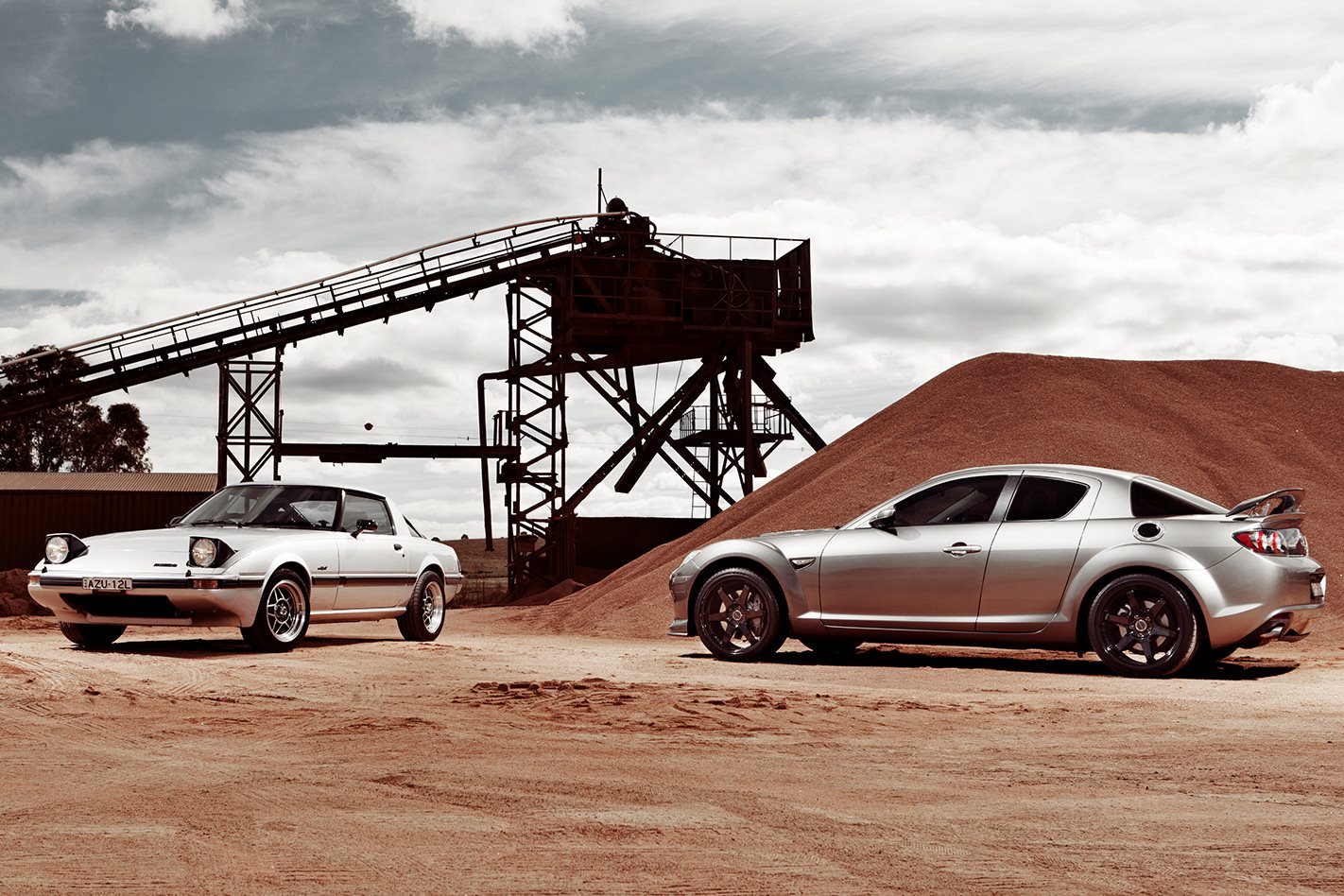It’s been 40 years since Mazda’s RX-7 burst onto roads and tracks around the world, so to celebrate four decades of Hiroshima’s favourite rotary-powered export we take a look back at the company’s long-running history with the innovative – and somewhat troubled – Wankel engine.
1967
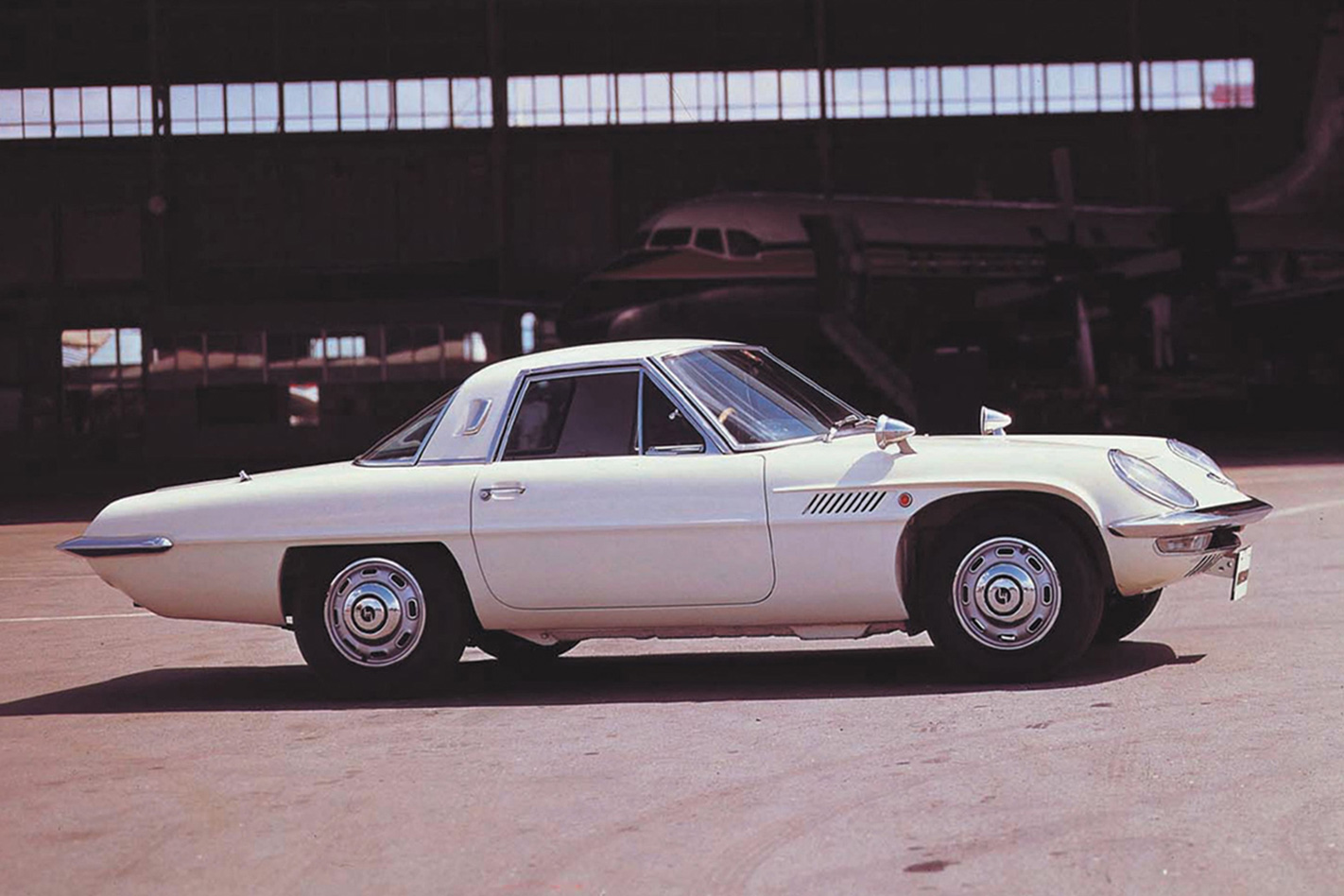
The Cosmo Sport 110S was the first Mazda to feature German engineer Felix Wankel’s advanced engine, and the first twin-rotor production car. As well as the radical 982cc L10A rotary engine, the two-seater, rear-drive coupe boasted rack and pinion steering and de Dion rear suspension, wrapped in a body that drew US and Euro styling cues, with a sporty, minimalist hounds tooth cloth ’n’ vinyl interior, wood-rim wheel and soon-to-be trademark central tachometer. Early Cosmo prototypes featured a smaller L8A engine. Protos powered by the L10A were shown at the 1964 Tokyo Motor Show, before the model went on sale in 1967. In all, 1519 Cosmos were built.
1968
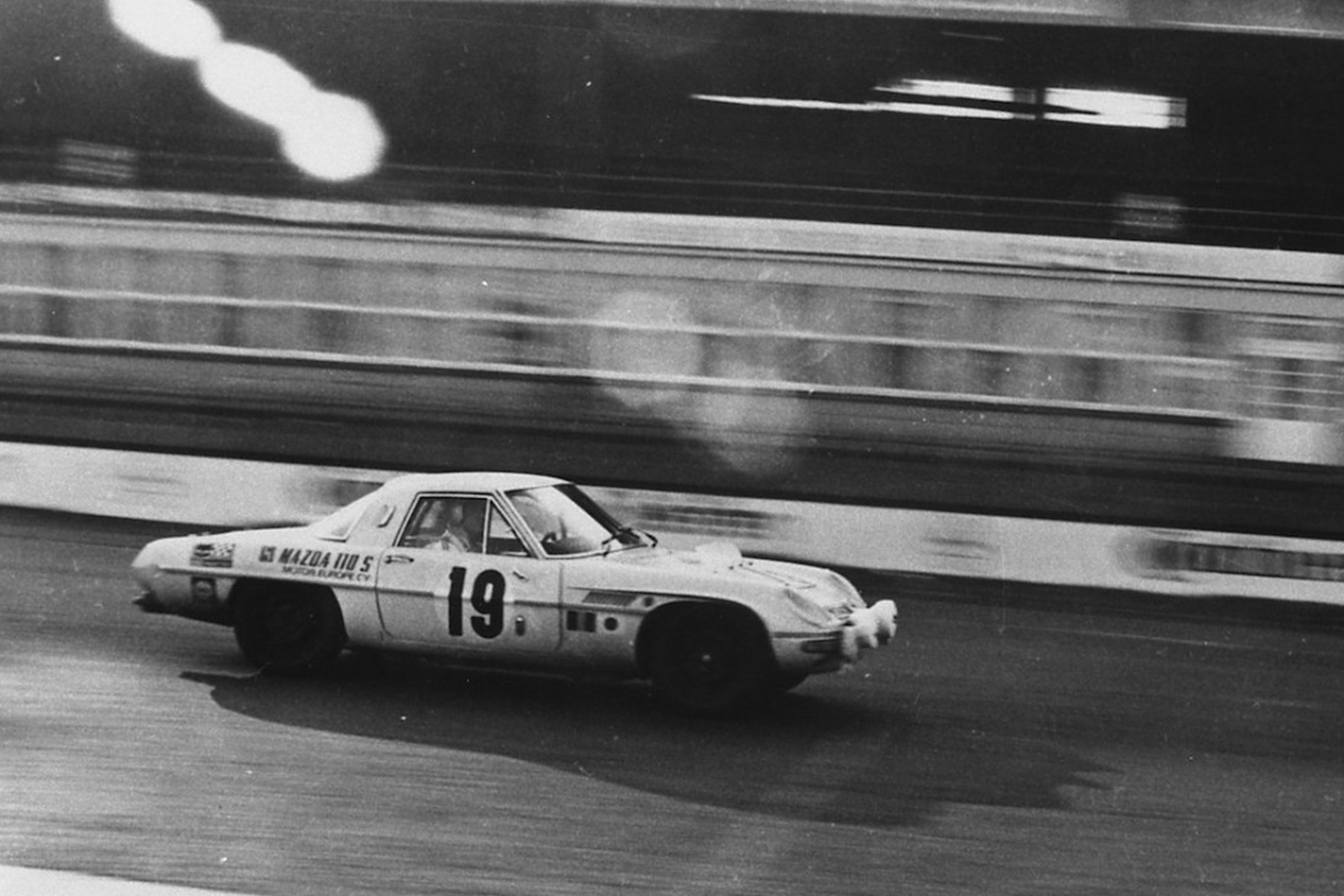
To prove the rotary engine’s durability, a pair of Cosmo Sports entered the 1968 Marathon de la Route 84-hour at the Nürburgring. The Cosmos held fourth and fifth for much of the race, the Japanese team suffering axle damage with two hours to go, and the Belgian entry finishing fourth.
1969
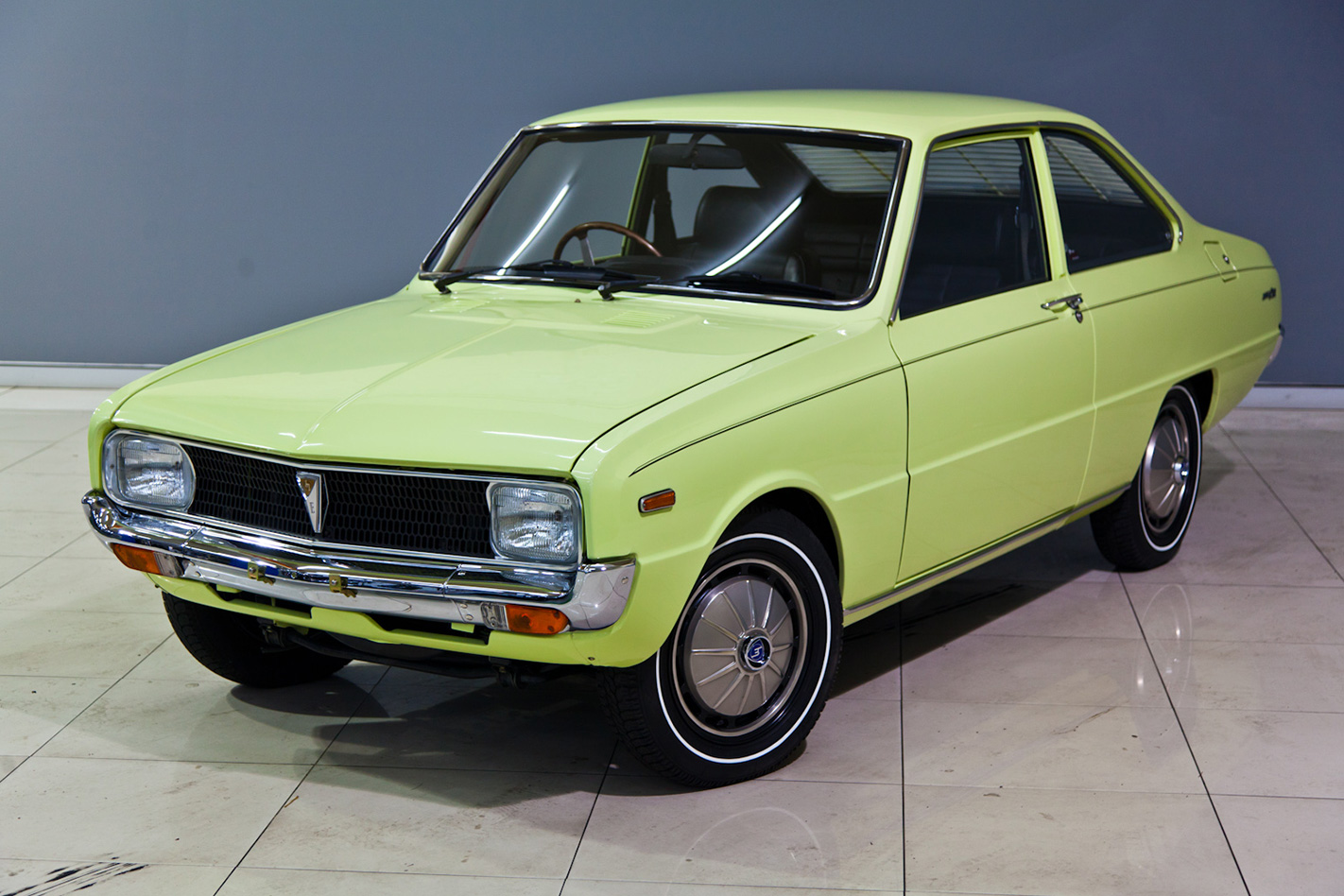
The Mazda Familia Coupe (R100 in Australia) offered rotary power in conventional wrapping to position the Wankel as a viable mainstream passenger-car engine. With its leaf-sprung live axle, drum rear brakes and recirculating ball steering, the R100 was no sports car, but the rev-happy 10A proved incredibly smooth.
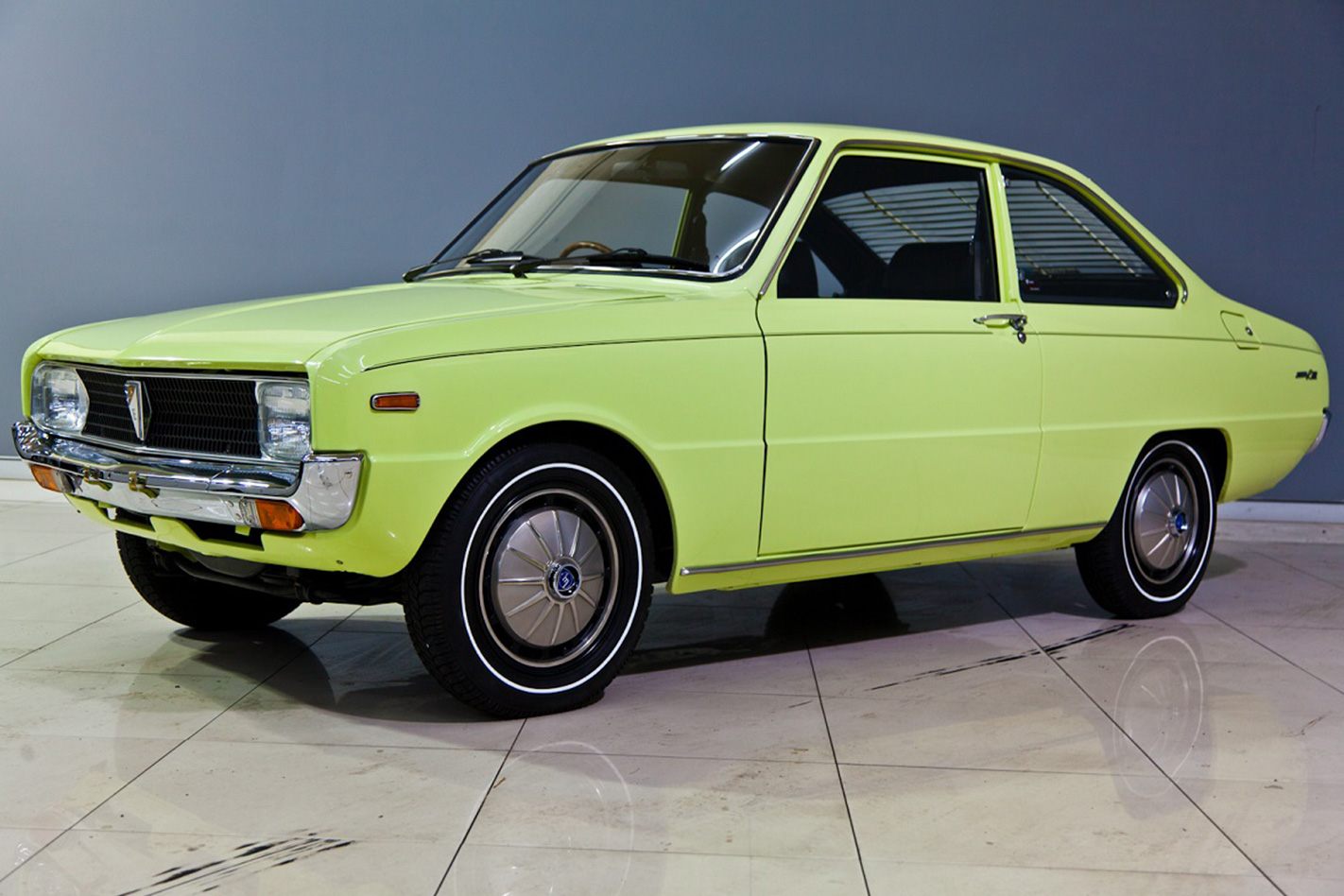
1969
Fewer than 1000 Luce Rotary Coupes were built. The Giorgetto Giugiaro-penned model brought something of the Cosmo’s styling elegance and holds a pair of distinctions in the Mazda rotary timeline, being the sole front-wheel-drive model, and the only car to use the 13A rotary engine.
1970
The Mazda RX-2 – also known (and badged in Australia) as a Capella, took the new, bigger 12A rotary – now up to 1146cc, thanks to 10mm wider rotor housings – and slotted it into a small family car that applied subtle Alfa Romeo and Peugeot cues to a practical sedan and a good-looking coupe. While the 12A engine proved more durable than the problematic 10A, it was not without its issues, and the coil-sprung live axle failed to deliver dynamics to match the rotary’s accelerative ability. Yet the RX-2 helped put the rotary on the map and still holds enthusiast appeal today.
1972

Perhaps the most-loved of Mazda’s early rotaries, the RX-3’s – Savanna in Japan – aggressive frontal styling, signature circular tail-lights and racetrack success endeared it to Australian enthusiasts, despite it being a very conventional small car like its predecessors. Early versions were 10A-powered, but later 12A RX-3s in sedan and coupe form (and as a Rotary Wagon in Japan) were more reliable and offered a better power-to-weight ratio.
1973
The Mazda RX-4 (aka Luce) was bigger and more luxurious than its RX-2 and RX-3 siblings, which sold alongside it in Australian showrooms through the mid-1970s. It was offered here as a rakish coupe and an upright sedan, initially powered by the 12A engine. The series II RX-4 offset its weight with the adoption of the bigger 12B (1308cc) engine, which would have made it the most potent RX yet, if not for the REAPS emissions system, which strangled outputs in an effort to green the exhaust.
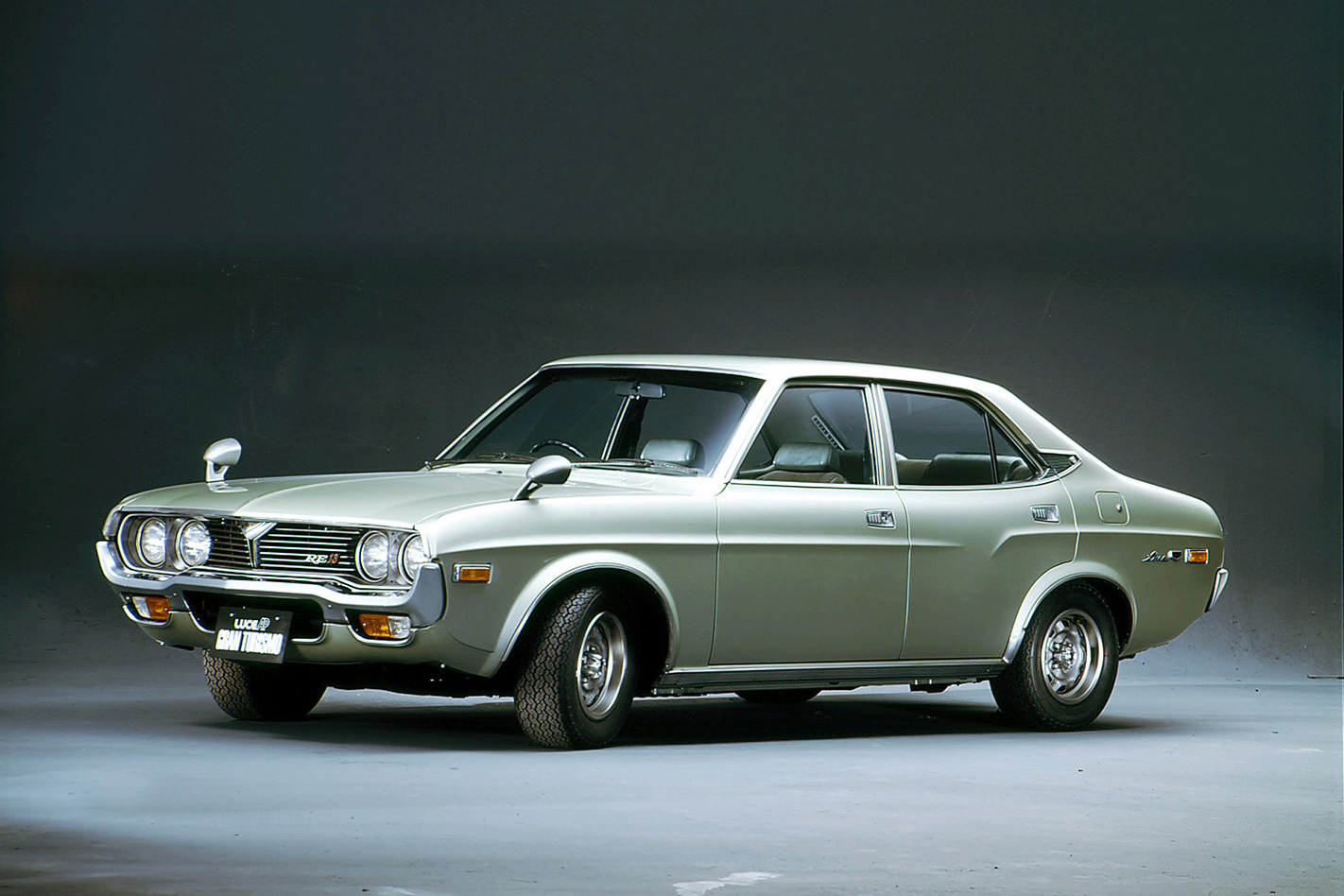
1974
It wasn’t offered in Australia, but the Rotary Engine Pick-up or ‘REPU’ sold Stateside signalled Mazda’s continuing push for the rotary as a mainstream engine, this time in a light commercial ute. The ‘Rotary Power’ tailgate slogan was a highlight of this unique aside in the Mazda rotary story.
1975
Was the Roadpacer the weirdest chapter in Mazda rotary history? Well, if you overlook the 1974-77 Parkway Rotary 26 bus, then yes. The slotting of a 13B rotary and three-speed auto into Holden HJ (and later HX) Premier bodies was certainly a strange way for Mazda to arrive at a Toyota Century/Nissan President rival. As if the big Aussie sedan’s torque-to-weight wasn’t already bad enough, Mazda loaded the Roadpacer with automatic central locking, an over-speed warning and audio controls for rear occupants, to create an unlikely steed for salarymen.
1975
The 1973 oil crisis had hurt the sales of gas guzzlers, and the rotary had established itself as thirsty. With the RX-5, Mazda set out to claw back sales in the United States by drawing styling inspiration from Yank cars of the time. However, on top of the heavy-handed styling that resulted, the RX-5 was bigger and heavier than the earlier RX models and despite some pluses, such as rear coil springs, rear discs, a five-speed manual, and the 13B engine, the weight and emissions controls conspired to kill performance and appeal. The RX-5 was called Cosmo in Japan, but it had little in common with its pretty precursor.
1979
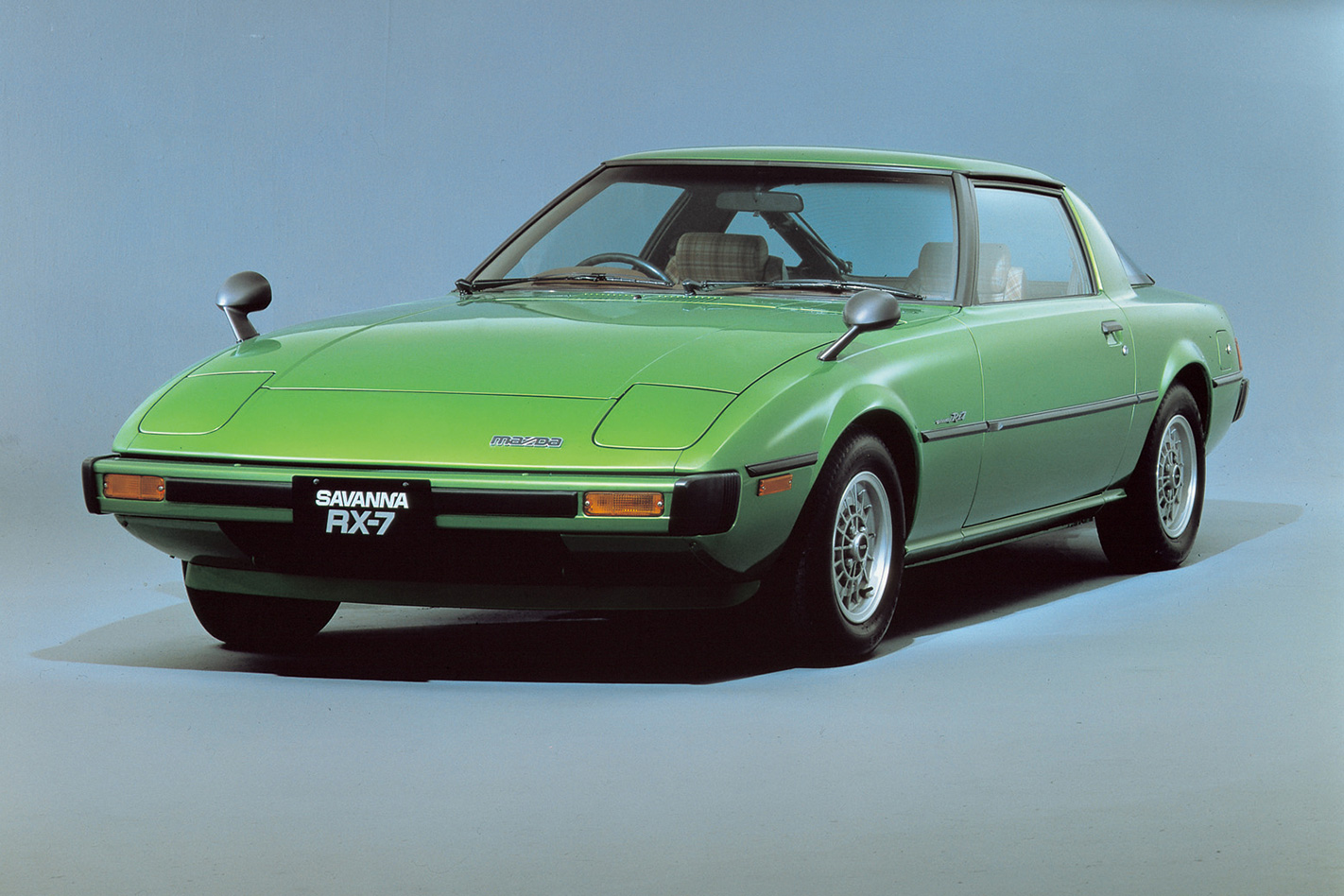
By the end of the 1970s, Hiroshima had come to the conclusion that the rotary’s home was in a sports machine, and looked to the Cosmo Sport for fresh inspiration. The result was the RX-7, which represented the rebirth of the rotary, drawing from the RX-3 parts bin to contain cost – recirculating ball steering, drum rear brakes – but deftly re-engineering them in a light 2+2 coupe with a low centre of gravity. The series 1 RX-7, circa 1000kg, was considered light enough that a revised 12A rotary was chosen rather than the 13B. Its location front-mid in the chassis contributed to 51/49 weight distribution and brilliant handling.
1982
The Cosmo and Luce badges were revived again in the early ’80s in Japan for a range of sedans, hardtops and coupes. They were sold in Australia as the Mazda 929, but we missed out on the engine at the heart of the HB Series Cosmo and Luce’s inclusion on the rotary honour roll. Fuel injection and turbocharging were firsts applied to the 12A engine, to make this Japan’s fastest production car at the time, and the Cosmo and Luce also featured power rack and pinion steering and independent rear suspension (with crude adaptive dampers) three years before the RX-7 adopted such tech.
1986
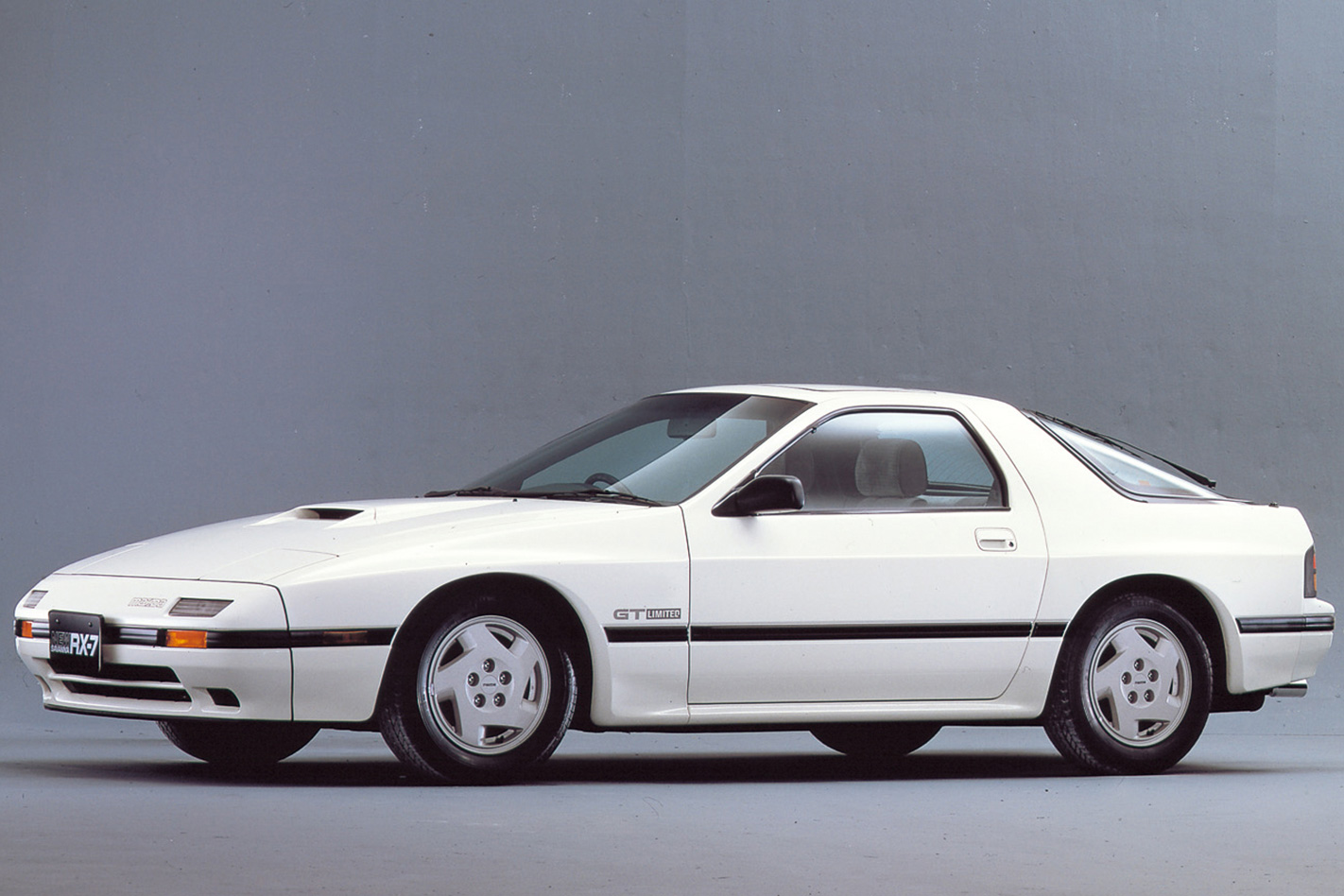
The second-generation RX-7, like sports car contemporaries the Nissan 300ZX and Toyota Supra, grew away from the original’s pure ideal into a bigger and heavier, pricier and more complex machine. The 2+2 coupe’s styling might have been derivative, but the powerful 13B intercooled turbo engine and clever passive rear-wheel steering IRS were all-new, and helped the RX-7 hunt upmarket.
1990
The Cosmo nameplate returned at the dawn of the ’90s, this time applied to a coupe from Mazda’s luxury marque, Eunos. The Japan-only JC series became the high-water mark in the development of the production rotary engine, in terms of the capacity, complexity, and power and torque outputs of its 206kW, 402Nm twin-turbo, triple-rotor 20B. One and a half 13Bs stacked end-to-end resulted in 1962cc and a unique exhaust howl.
1991
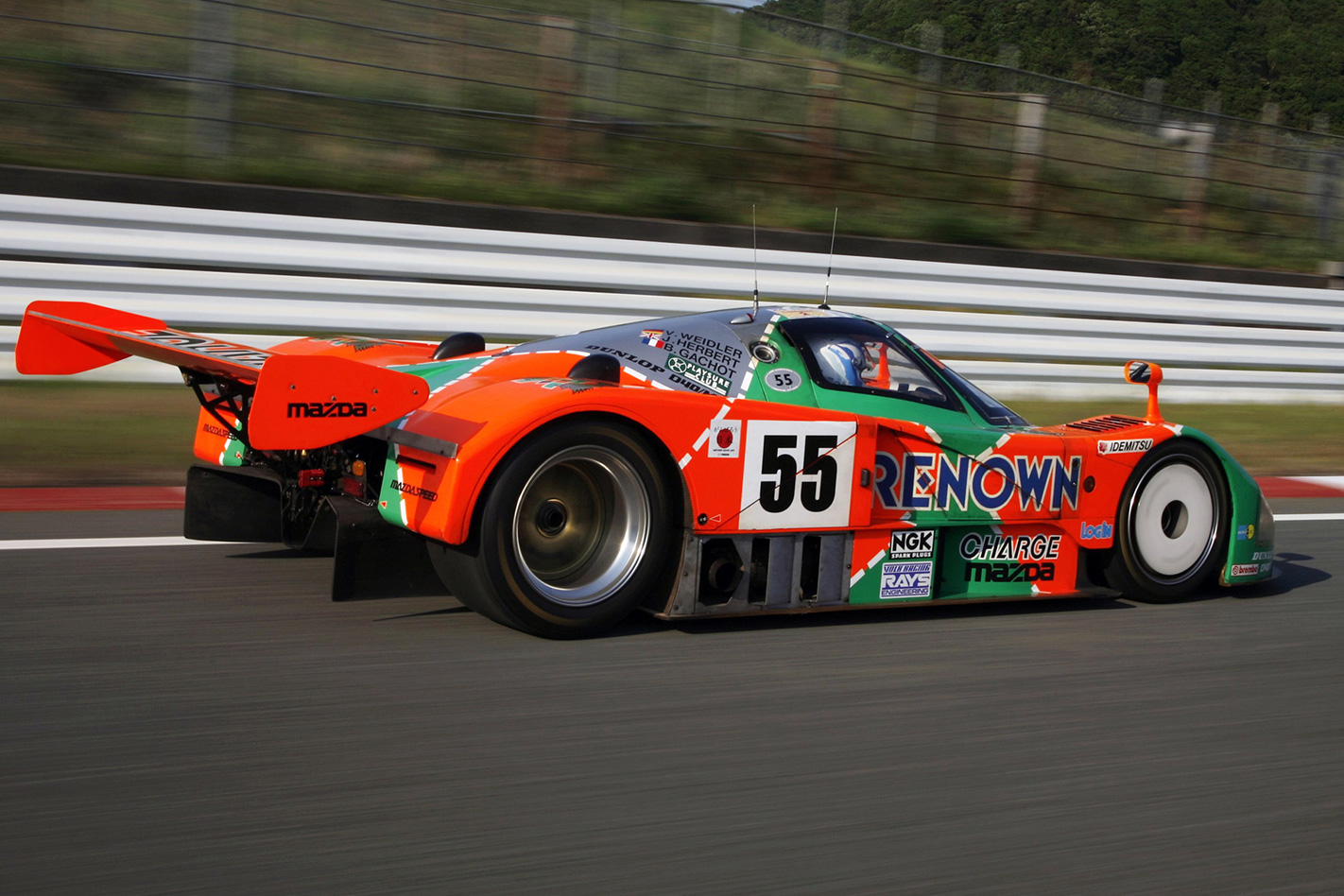
Anyone who had come to the conclusion in the 1970s and 80s that the Mazda rotary was thirsty or unreliable – and at various moments in its history it had been both – probably didn’t see the Japanese brand’s Le Mans campaign coming. After all, efficiency and reliability are the very cornerstones of endurance racing. Yet, with the screaming naturally aspirated quad-rotor R26B rotary-powered 787B Group C sports prototype, Mazda sealed what remains the only non-piston-engine victory – and the sole win for a Japanese maker – at the gruelling 24 Hours of Le Mans, beating out tough rivals from Mercedes-Benz, Jaguar and Porsche.
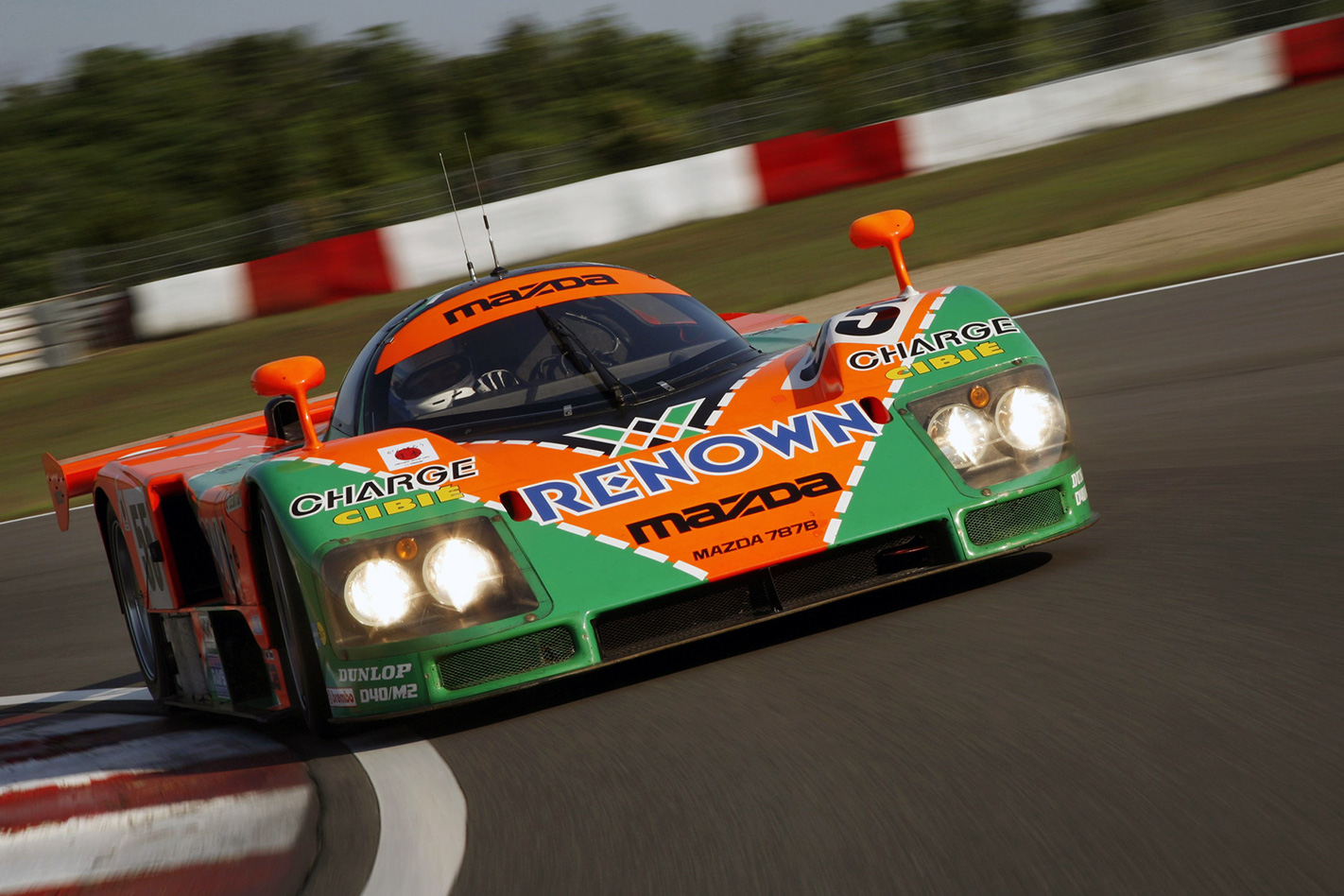
1992
While many Japanese rivals continued the pursuit of speed via technology into the 1990s, Mazda returned with a third and final RX-7 that was simpler and lighter, with a focus on handling purity and its most potent twin-rotor production engine yet. The 13B-REW twin turbo produced 176kW in Australian-delivered series six RX-7s, to make the trim, taut and terrific FD series Mazda’s quickest road rotary to date.
1992
Nine years after Allan Moffat’s RX-7 finished second in the Bathurst 1000, Mazda returned to the Mountain for the James Hardie 12-hour with a pair of third-gen RX-7s and went one better. The RX-7 graced the top step again in ’93 and ’94, and in ’95 at Eastern Creek. Mazda Motorsport, under Allan Horsley, went on to become a tarmac rally force.
2003
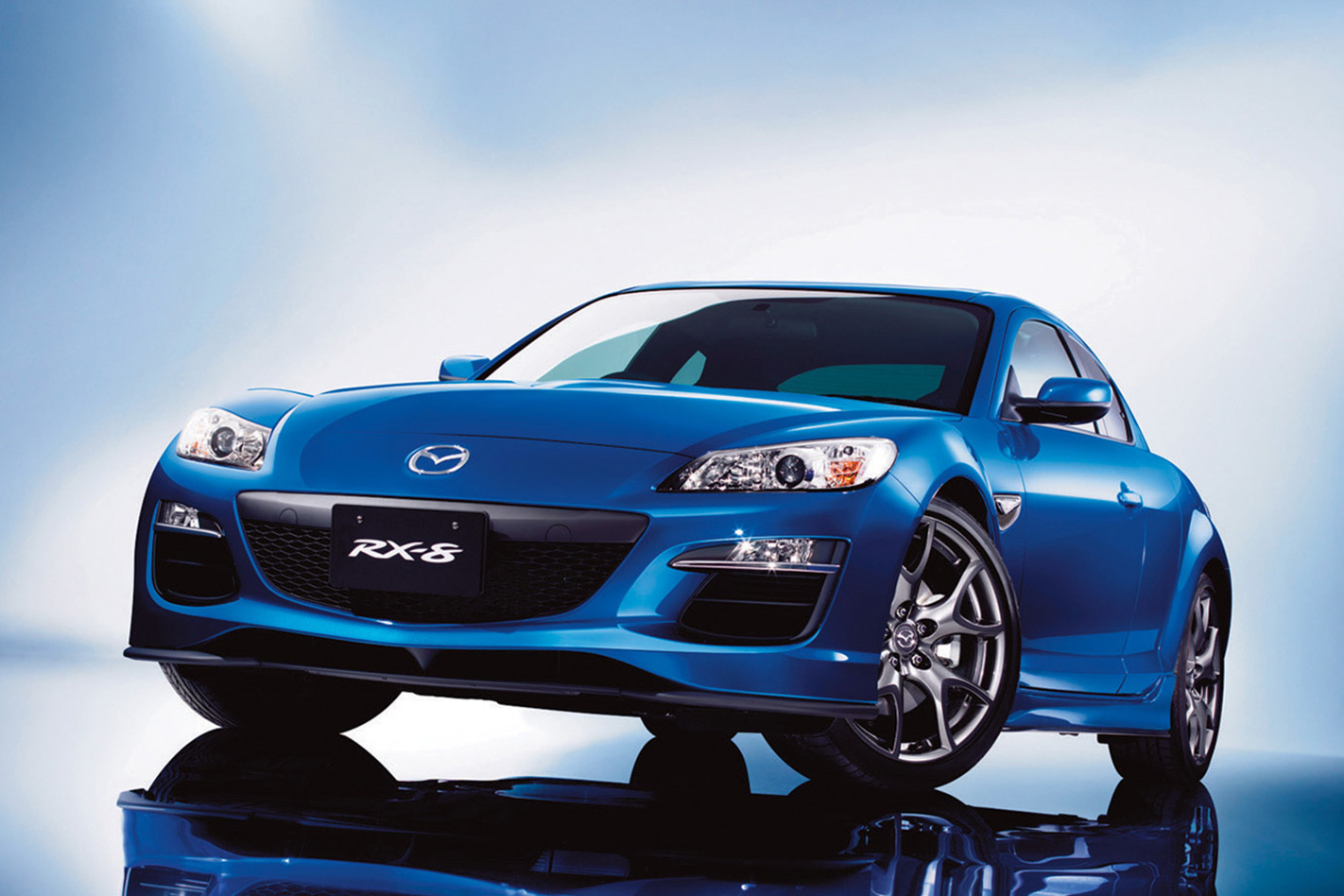
In the RX-8, the new 177kW naturally aspirated multi-side-port Renesis engine – still a 1308cc twin-rotor like the original 13B – was deployed in a ‘freestyle’ four-door, four-seater coupe long before Europe adopted the genre. While at various times in its rotary history Mazda had positioned its revolutionary engine to deliver a family, sports or luxury experience, the RX-8 was designed to provide a measure of all three. A stunning automotive achievement, the RX-8 was 2003 Wheels Car of the Year.

